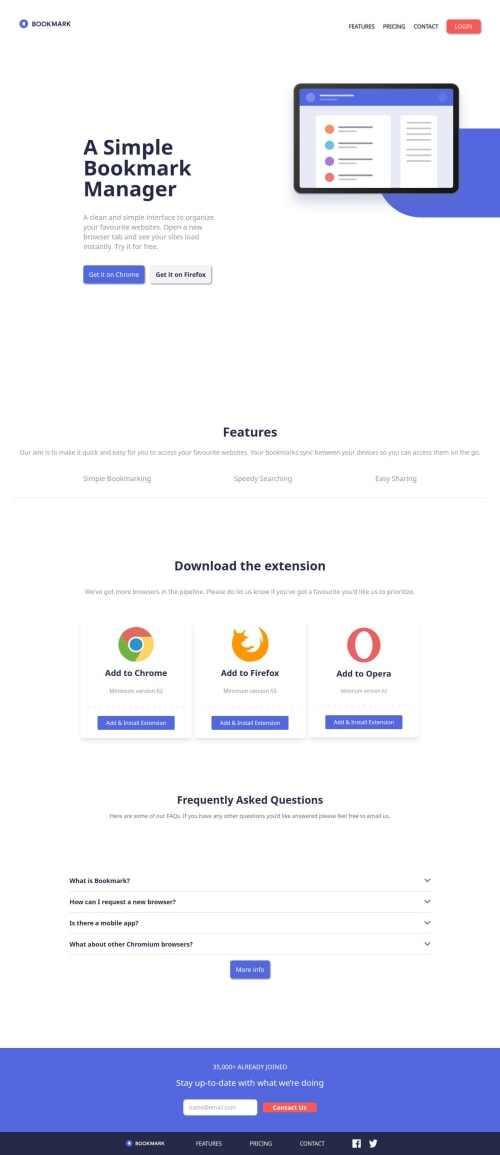ReactJS TailwindCSS Vite Bookmark Landing Page

Solution retrospective
This project was really fun to make! I enjoyed learning about all the different aspects and continuing improving my skills in ReactJS, TailwindCSS, and Vite. I was able to make my project very close to the design replica with all additional features created including mobile responsive.
What challenges did you encounter, and how did you overcome them?-
Validating Email: I learned how to create a function called
validateEmailthat takes anemailparameter. The function uses a regular expression pattern, assigned to the variablere, to validate the structure of an email address. The email is converted to a lowercase string and tested against the regex pattern using thetestmethod. Thetestmethod returnstrueif the email matches the pattern, otherwise it returnsfalse. -
Setting Up the Email Signup Section for the Newsletter: The form element uses the
handleSubmitfunction to manage form submission. The input element is specified for email addresses, binding its value to theemailstate. TheonChangeevent updates theemailstate whenever the input value changes, using Tailwind CSS for styling. An error message is conditionally rendered if theerrorstate is truthy. The submit button is configured to submit the form.
Any feedback is helpful! Thanks!
Please log in to post a comment
Log in with GitHubCommunity feedback
No feedback yet. Be the first to give feedback on lavollmer's solution.
Join our Discord community
Join thousands of Frontend Mentor community members taking the challenges, sharing resources, helping each other, and chatting about all things front-end!
Join our Discord